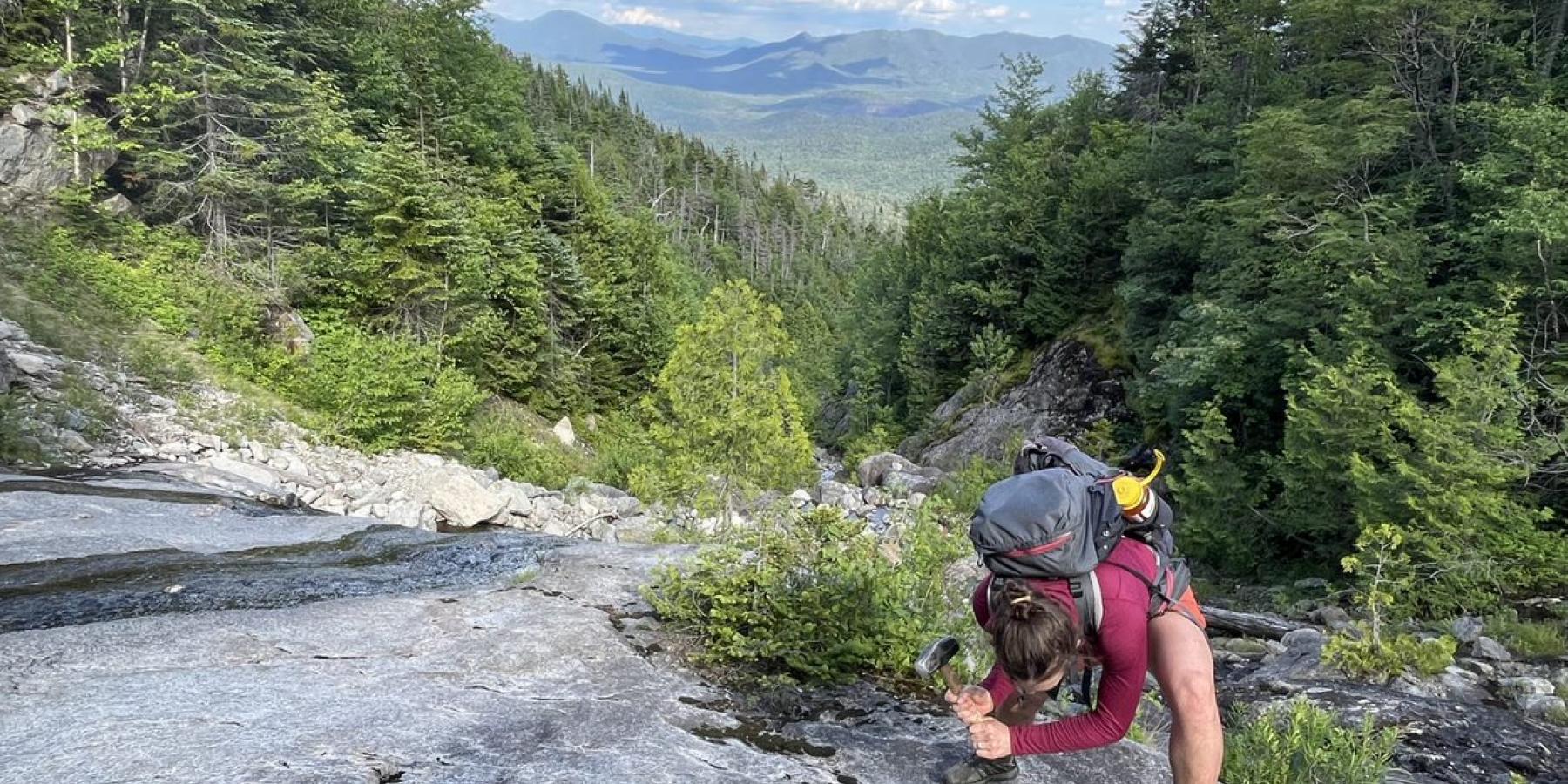Support
Recent uplift of the Precambrian Adirondack (ADK) Mountains provides a glimpse into the center of the ancient orogenic belt of the Grenville Province. The ADK Highlands are dominated by the Anorthosite-Mangerite-Charnockite-Granite (AMCG) intrusive suite. Structural and lithologic diversity in the ADK Highlands have been attributed to the effects of multiple orogenic events. The Marcy Anorthosite Massif, located within the ADK Highlands, is typically depicted as one homogenous geologic unit of metanorthosite and anorthosite gneiss. This depiction is due to its relative inaccessibility and poor exposure of bedrock at lower elevations. Numerous recently exposed landslides in the ADK Highlands caused by heavy rains from Hurricane Irene in 2011, provide an unprecedented view into the three-dimensional complexity that exists within the bedrock of the Marcy Anorthosite Massif. Previous work on the Bennies Brook Slide in the ADK Highlands by Chiarenzelli et al. (2015) documented lithologic, structural, and textural heterogeneity that conflicts with the prior depiction as a single homogeneous unit. Evidence of numerous additional rock types, intrusive relations, and structural features have been documented at multiple slides within the Marcy Anorthosite Massif. This study involved a significant field component to sample six landslides (0.6 -2.1 km in length) including Cooper Kill, Bennie’s Brook, Cascade, Kilburn, Twin, and Wide Slide to carefully document chemical, structural (strike and dip), and petrologic heterogeneity within the Marcy Anorthosite Massif. Navigational skills regarding use of a map and compass, as well as GPS, were necessary to access each slide as they require bushwhacking through thick vegetation to access. GPS coordinates were recorded at sampling localities of exposed bedrock upon climbing each slide. Observations in the field were made regarding mineralogy, rock type, intrusive relations, and structural features of brittle and ductile deformation. Strike and dip measurements of the orientation of structural features (including metamorphic fabric, foliation, and crosscutting veins/igneous intrusions) in each unit were recorded when appropriate using a Brunton Compass. Thin section billets were cut and polished for 89 samples using a rock saw and polished with a polishing wheel. Thin section billets were sent to Quality Thin Sections (Tucson, AZ) to create thin sections for petrographic and scanning electron microscopic analysis, which will continue in the fall term. Preliminary results indicate significant variability at all six slides. All sites contain anorthosite gneiss and metanorthosite ranging from fine-grained to megacrystic (≤ 20 cm). Additional rock types at all localities include undeformed to heavily deformed gabbroic anorthosite, ferrodiorite, and deformed calc-silicate xenoliths. Individual slides display rarer lithologies including pyrrhotite gneiss, skarn deposits, and fault gouge. All localities contain cross-cutting intrusive lithologies including undeformed to deformed fine-grained mafic dikes, as well as fine-grained to pegmatitic leucogranitoid and syenitic dikes.

